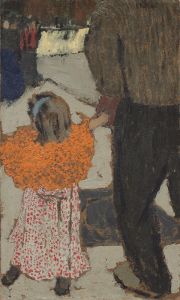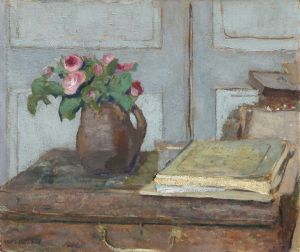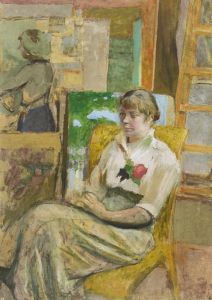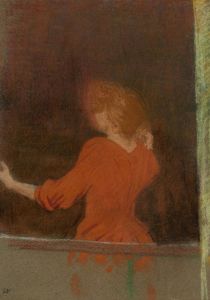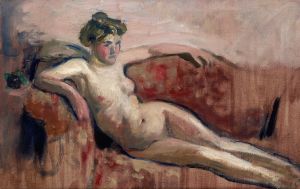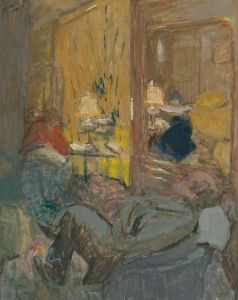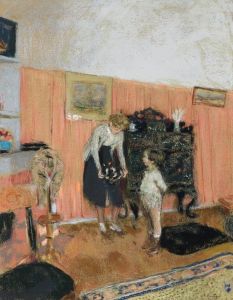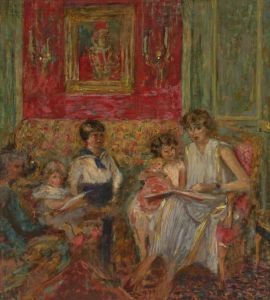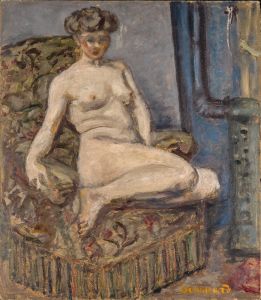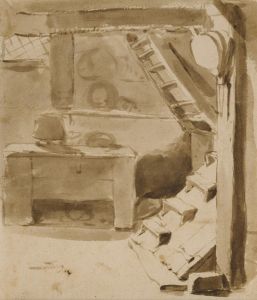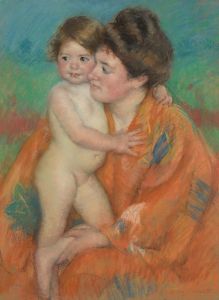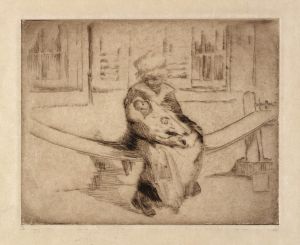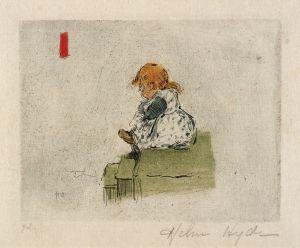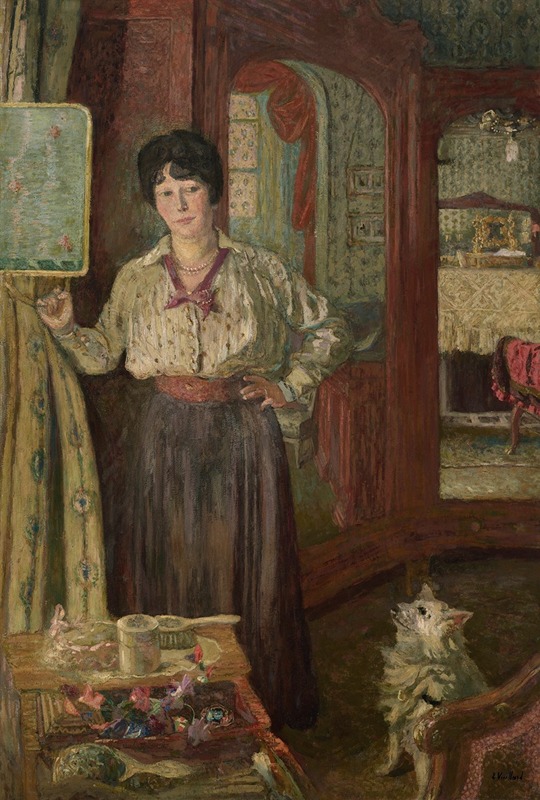
Jeanne Louise Guérin
A hand-painted replica of Édouard Vuillard’s masterpiece Jeanne Louise Guérin, meticulously crafted by professional artists to capture the true essence of the original. Each piece is created with museum-quality canvas and rare mineral pigments, carefully painted by experienced artists with delicate brushstrokes and rich, layered colors to perfectly recreate the texture of the original artwork. Unlike machine-printed reproductions, this hand-painted version brings the painting to life, infused with the artist’s emotions and skill in every stroke. Whether for personal collection or home decoration, it instantly elevates the artistic atmosphere of any space.
Édouard Vuillard, a prominent French painter associated with the Nabi movement, created the painting "Jeanne Louise Guérin." Vuillard was known for his intimate domestic interiors and his ability to capture the subtleties of everyday life. Born in 1868, Vuillard developed a distinctive style characterized by a rich use of color and pattern, often incorporating elements of the decorative arts into his compositions.
"Jeanne Louise Guérin" is one of Vuillard's many portraits, a genre he frequently explored throughout his career. Vuillard's portraits are noted for their psychological depth and the way they convey the personality and mood of the sitter. In this painting, Vuillard employs his typical approach of blending the figure with the surrounding environment, creating a harmonious balance between the subject and the background.
The painting likely reflects Vuillard's interest in the interplay between the figure and their surroundings, a hallmark of his work. He often painted his subjects in familiar settings, surrounded by objects that provide insight into their lives and personalities. This approach allows the viewer to gain a deeper understanding of the subject beyond their physical appearance.
Vuillard's technique involved the use of soft, muted colors and a flattened perspective, which were influenced by Japanese prints and the Symbolist movement. His brushwork is often loose and expressive, contributing to the overall sense of intimacy and immediacy in his paintings. This style is evident in "Jeanne Louise Guérin," where the textures and patterns of the background play a significant role in the composition.
The Nabis, a group of avant-garde artists to which Vuillard belonged, were instrumental in the transition from Impressionism to Modernism. They emphasized the importance of the artist's subjective experience and sought to imbue their works with spiritual and symbolic meaning. Vuillard's work, including "Jeanne Louise Guérin," reflects these principles through its focus on mood and atmosphere rather than strict realism.
While specific details about the subject, Jeanne Louise Guérin, are not widely documented, it is clear that Vuillard's portrayal is consistent with his broader artistic goals. He aimed to capture the essence of his subjects, often those within his social circle, and present them in a way that was both personal and universal.
Vuillard's contribution to art extends beyond his paintings; he was also involved in theater design and decorative arts, further demonstrating his versatility and commitment to integrating art into everyday life. His work continues to be celebrated for its innovative approach and its ability to convey the complexities of human experience.
In summary, "Jeanne Louise Guérin" by Édouard Vuillard exemplifies the artist's unique style and his focus on the intimate portrayal of his subjects. Through his use of color, pattern, and composition, Vuillard creates a work that is both aesthetically pleasing and rich in psychological depth, reflecting the broader themes of the Nabi movement and his personal artistic vision.





